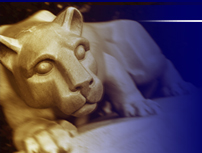Key Ideas for Interpreting the Readings about Encounters
The article and the film that you will examine provide insight into the ways that religion shaped the early encounters between Indians and Europeans.
James Rhonda focuses on the ways that Indians responded to the efforts of Catholic Jesuits to convert them. He emphasizes that the Indians did not simply “buy in” to the Europeans’ descriptions of their religion. Instead, the Indians challenged the Catholics and questioned them. Rhonda points out that Catholic ideas about sin, guilt, and the afterlife were not compatible with Indian belief systems.
Rhonda’s discussion also shows that, just as the Indians were often critical of the Catholic beliefs, the Jesuits did not agree with the Indians’ worldview and strenuously fought to change it. For the Jesuits, the Indians represented souls that God wanted them to “save.” If they could convince the Indians to become Catholics, they would be earning points with God, as well as drawing the Native Americans into their culture. Rhonda explains that, since the Indians religious views were such a defining aspect of their culture, when the Europeans asked them to convert to a new religion, they were effectively demanding that the Indians adopt a whole new culture as well.
Catherine Albanese’s chapter provides rich description of the Native worldviews and their understandings of nature. Along with my commentary above, her discussion of Indian religion should help you to explore why the Indians and Europeans had a lot of trouble understanding each other. Their conceptions of how the world operated were very different, and often incompatible.
While the Indians’ own religions and cultures prompted them to question the new religions that the Europeans were presenting, we know that, ultimately, many Indians did convert to Christianity. The reasons for this are complicated. No single event in Native American history caused greater social disruption than the arrival of the European colonists in the 1600s. The Europeans brought new germs that devastated the Native populations. They brought new approaches to agriculture and hunting that caused food shortages. They disrupted the living boundaries that Indians had established among themselves. These practical, biological hardships demoralized Indian communities and brought a sense of spiritual crisis. When Europeans introduced alcohol into these communities, many of the already despondent Natives developed severe addictions, which only worsened their spiritual malaise. This crisis meant that, while some Indians blamed the Europeans and their strange new religious beliefs for their misfortunes, others became disillusioned with their own faith and more receptive to Christian conversion.
